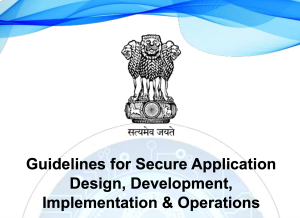
In the ever-evolving world of cybercrime, attackers are constantly developing new tactics to trick unsuspecting individuals into handing over sensitive information. One such tactic that has been gaining traction is callback phishing. This scam plays on the trust people often place in phone communications and the perceived safety of calling a number rather than clicking on a suspicious link. In this post, we’ll delve into what callback phishing is, how it works, and what steps you can take to protect yourself from falling victim to this increasingly common threat.
What Is Callback Phishing?
Callback phishing is a type of scam where cybercriminals send you an email urging you to call a phone number included in the message. Unlike traditional phishing emails that direct you to click on a malicious link or download a harmful attachment, callback phishing relies on the assumption that calling a phone number is a safer action. This is what makes the scam so effective.
The email typically presents itself as a notification about an urgent issue—such as a fraudulent charge on your account, a critical software update, or a problem with your subscription—that requires your immediate attention. The urgency and the perceived legitimacy of the request make you more likely to comply with the instructions provided, including calling the number listed in the email.
What Happens If I Call?
If you decide to call the number provided in the email, you’re unknowingly stepping into a trap set by cybercriminals. Here’s what can happen:
- Tricking You into Revealing Sensitive Information:
- Once connected, cybercriminals may use an automated voice message or live agents posing as customer service representatives to extract sensitive information from you. They might ask you to provide details like your credit card number, Social Security number, or account passwords, all under the guise of helping you resolve the issue mentioned in the email.
- Malware Installation:
- In some cases, the attackers may instruct you to download a file or visit a website, claiming it’s necessary to fix the problem at hand. However, this file or website is likely laced with malware designed to compromise your device and steal even more of your personal information.
- Social Engineering:
- Cybercriminals may employ social engineering techniques to manipulate you into taking actions that benefit them, such as transferring money or giving them access to your computer remotely. They may use fear, urgency, or authority to make you comply without question.
What Can I Do to Stay Safe?
Understanding the risks associated with callback phishing is the first step in protecting yourself. Here are some practical tips to help you avoid falling victim to these scams:
- Verify Before Calling:
- If you receive an email prompting you to call a phone number, take a moment to verify the number’s legitimacy. Rather than calling the number provided in the email, navigate to the official website of the organization in question and use the contact information listed there. This ensures that you’re reaching the legitimate company rather than a cybercriminal.
- Ask for Verification:
- Before sharing any sensitive information over the phone, ask the caller to verify their identity. For example, you could ask them to provide information they should already have on file, like the last four digits of your account number. If they can’t provide accurate details or if anything feels off, don’t hesitate to hang up.
- Be Wary of Urgent Requests:
- Phishing attacks often rely on creating a sense of urgency to prompt impulsive actions. If an email or phone call is pressuring you to act quickly, take a step back and think before you proceed. Scammers want you to act without thinking, so slowing down and considering the situation critically can be your best defense.
- Report Suspicious Emails:
- If you receive a suspicious email, especially one urging you to call a number, report it to your organization’s IT department or follow your company’s established protocols for dealing with potential phishing threats. Reporting helps protect others in your organization from falling victim to the same scam.
Conclusion
Callback phishing is a sophisticated scam that preys on the trust people place in phone communications. By understanding how this tactic works and following the safety tips outlined above, you can better protect yourself and your organization from these dangerous phishing attempts. Remember, always verify before you act, and never let a sense of urgency cloud your judgment.
Tags: EmailSecurity, PhishingPrevention, CallbackPhishing, CyberSecurityTips, ITSecurity, PhishingScams, InformationSecurity, SocialEngineering, SecurityAwareness, ProtectYourData





